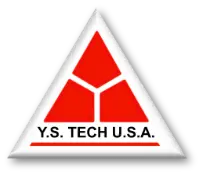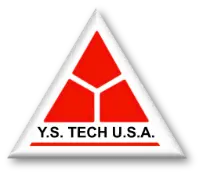Edge computing equipment: the best thermal cooling methods and the science behind them for telecom
Are your cooling solutions up to the challenge? Could you be doing more to boost efficiency and reduce downtime? Let’s find out.
Why thermal management matters in edge computing
In edge computing, where data needs to be processed in milliseconds, keeping equipment cool isn’t just nice-to-have; it’s essential. High temperatures can lead to system malfunctions, costly repairs, and downtime. Telecom equipment often sits in remote, hard-to-access locations, so reliable, low-maintenance cooling is key. Failure rates can drop by up to 30% with proper cooling, as companies like Iceotope have shown with their advanced liquid cooling solutions.
For example, picture a remote telecom tower in a rural area. If its edge computing unit overheats, it won’t just affect local data processing; it’ll also cost time and money to fix. This is why choosing the right cooling solution matters—not just to keep things running, but to minimize long-term costs.
Leading thermal cooling methods
So, what are the best ways to keep edge computing systems cool? Here’s a closer look at the main methods telecom companies are using to stay ahead.
1. Liquid cooling: more efficient heat transfer
Liquid cooling is rapidly gaining ground in edge computing because it’s powerful and efficient. The system circulates a liquid, often a dielectric fluid, directly over the equipment to draw heat away. Here are two popular techniques:
Thermoelectric cooling (TEC) taps into the Peltier effect—an electric current creates a heat flux between two materials, moving heat away from sensitive parts. Think of it like a high-tech, energy-efficient way of pushing out heat from critical areas. This type of cooling is especially useful for precise temperature control, making it ideal for devices that need tight thermal regulation.
In telecom, TEC can be used in areas where even slight temperature variations can impact performance. The system’s ability to lower a chip’s temperature below the surrounding air adds an extra layer of control, which isn’t possible with air-based systems.
3. Loop heat pipes: compact, reliable, and energy-efficient
Loop heat pipes operate using capillary action, circulating a fluid without the need for pumps. This passive cooling method works by absorbing heat from equipment and moving it through a wick structure, where it eventually dissipates. Since loop heat pipes don’t need mechanical pumps, they’re perfect for remote, compact setups.
Imagine a small edge data center where space and power are limited. Here, loop heat pipes are not only reliable but also efficient. They don’t consume much energy, making them a cost-effective solution for telecom providers looking to maintain uptime without skyrocketing costs.
The science behind cooling methods
Each of these methods relies on basic heat transfer principles: conduction, convection, and, in some cases, thermoelectric effects. Here’s how the science makes it all work.
Why this matters for telecom
Telecom companies rely on edge computing to deliver real-time data processing closer to users, which helps reduce lag and improve service quality. However, without effective cooling, this high-power processing equipment can quickly overheat, risking service interruptions. Imagine an area’s internet service dropping because a key processing unit failed. Beyond frustrating, it’s costly and inconvenient.
For instance, in rural cell towers, deploying liquid cooling can prevent overheating while reducing the frequency of maintenance calls. With fewer on-site visits needed, operational costs drop, and the equipment’s lifespan increases—a win-win for both providers and customers.
Choosing the right cooling method means telecom providers can meet growing demands with confidence, knowing their equipment is reliable and efficient. From liquid cooling that maximizes energy savings to thermoelectric cooling for precision and loop heat pipes for maintenance-free setups, each solution brings something unique.
So, which cooling method suits your needs? Are your systems designed to support this essential technology? How will you adapt as edge computing continues to expand in the telecom sector?
Why thermal management matters in edge computing
In edge computing, where data needs to be processed in milliseconds, keeping equipment cool isn’t just nice-to-have; it’s essential. High temperatures can lead to system malfunctions, costly repairs, and downtime. Telecom equipment often sits in remote, hard-to-access locations, so reliable, low-maintenance cooling is key. Failure rates can drop by up to 30% with proper cooling, as companies like Iceotope have shown with their advanced liquid cooling solutions.
For example, picture a remote telecom tower in a rural area. If its edge computing unit overheats, it won’t just affect local data processing; it’ll also cost time and money to fix. This is why choosing the right cooling solution matters—not just to keep things running, but to minimize long-term costs.
Leading thermal cooling methods
So, what are the best ways to keep edge computing systems cool? Here’s a closer look at the main methods telecom companies are using to stay ahead.
1. Liquid cooling: more efficient heat transfer
Liquid cooling is rapidly gaining ground in edge computing because it’s powerful and efficient. The system circulates a liquid, often a dielectric fluid, directly over the equipment to draw heat away. Here are two popular techniques:
- Direct-to-chip liquid cooling: This method circulates coolant over individual chips, like GPUs and CPUs, pulling heat directly from the source. It’s particularly effective in dense, high-performance setups. For instance, JetCool uses direct-to-chip cooling to reduce energy use significantly compared to air cooling.
- Immersion cooling: Imagine submerging your equipment in a pool of special fluid. With immersion cooling, devices are placed in a dielectric liquid bath, allowing heat to dissipate passively as the liquid boils and re-condenses. This method, which relies on a phase change, is highly efficient for high-density setups, where air cooling falls short.
Thermoelectric cooling (TEC) taps into the Peltier effect—an electric current creates a heat flux between two materials, moving heat away from sensitive parts. Think of it like a high-tech, energy-efficient way of pushing out heat from critical areas. This type of cooling is especially useful for precise temperature control, making it ideal for devices that need tight thermal regulation.
In telecom, TEC can be used in areas where even slight temperature variations can impact performance. The system’s ability to lower a chip’s temperature below the surrounding air adds an extra layer of control, which isn’t possible with air-based systems.
3. Loop heat pipes: compact, reliable, and energy-efficient
Loop heat pipes operate using capillary action, circulating a fluid without the need for pumps. This passive cooling method works by absorbing heat from equipment and moving it through a wick structure, where it eventually dissipates. Since loop heat pipes don’t need mechanical pumps, they’re perfect for remote, compact setups.
Imagine a small edge data center where space and power are limited. Here, loop heat pipes are not only reliable but also efficient. They don’t consume much energy, making them a cost-effective solution for telecom providers looking to maintain uptime without skyrocketing costs.
The science behind cooling methods
Each of these methods relies on basic heat transfer principles: conduction, convection, and, in some cases, thermoelectric effects. Here’s how the science makes it all work.
- Heat Transfer Mechanisms: In direct-to-chip and immersion cooling, conduction and convection are at play. The liquid absorbs heat from components (conduction), and when it circulates, it helps carry that heat away from the system (convection).
- Thermoelectric Effects: Thermoelectric cooling relies on the Peltier effect, where current flows between two different materials, creating a temperature difference. It’s a nifty solution when you need tight temperature control—TEC doesn’t just cool; it can actively push heat out of the most critical spots.
- Capillary Action: Loop heat pipes are driven by capillary action, the same force that lets plants draw water up from roots to leaves. Here, it moves coolant through a closed system, enabling heat to transfer efficiently without the need for mechanical pumps.
Why this matters for telecom
Telecom companies rely on edge computing to deliver real-time data processing closer to users, which helps reduce lag and improve service quality. However, without effective cooling, this high-power processing equipment can quickly overheat, risking service interruptions. Imagine an area’s internet service dropping because a key processing unit failed. Beyond frustrating, it’s costly and inconvenient.
For instance, in rural cell towers, deploying liquid cooling can prevent overheating while reducing the frequency of maintenance calls. With fewer on-site visits needed, operational costs drop, and the equipment’s lifespan increases—a win-win for both providers and customers.
Choosing the right cooling method means telecom providers can meet growing demands with confidence, knowing their equipment is reliable and efficient. From liquid cooling that maximizes energy savings to thermoelectric cooling for precision and loop heat pipes for maintenance-free setups, each solution brings something unique.
So, which cooling method suits your needs? Are your systems designed to support this essential technology? How will you adapt as edge computing continues to expand in the telecom sector?



